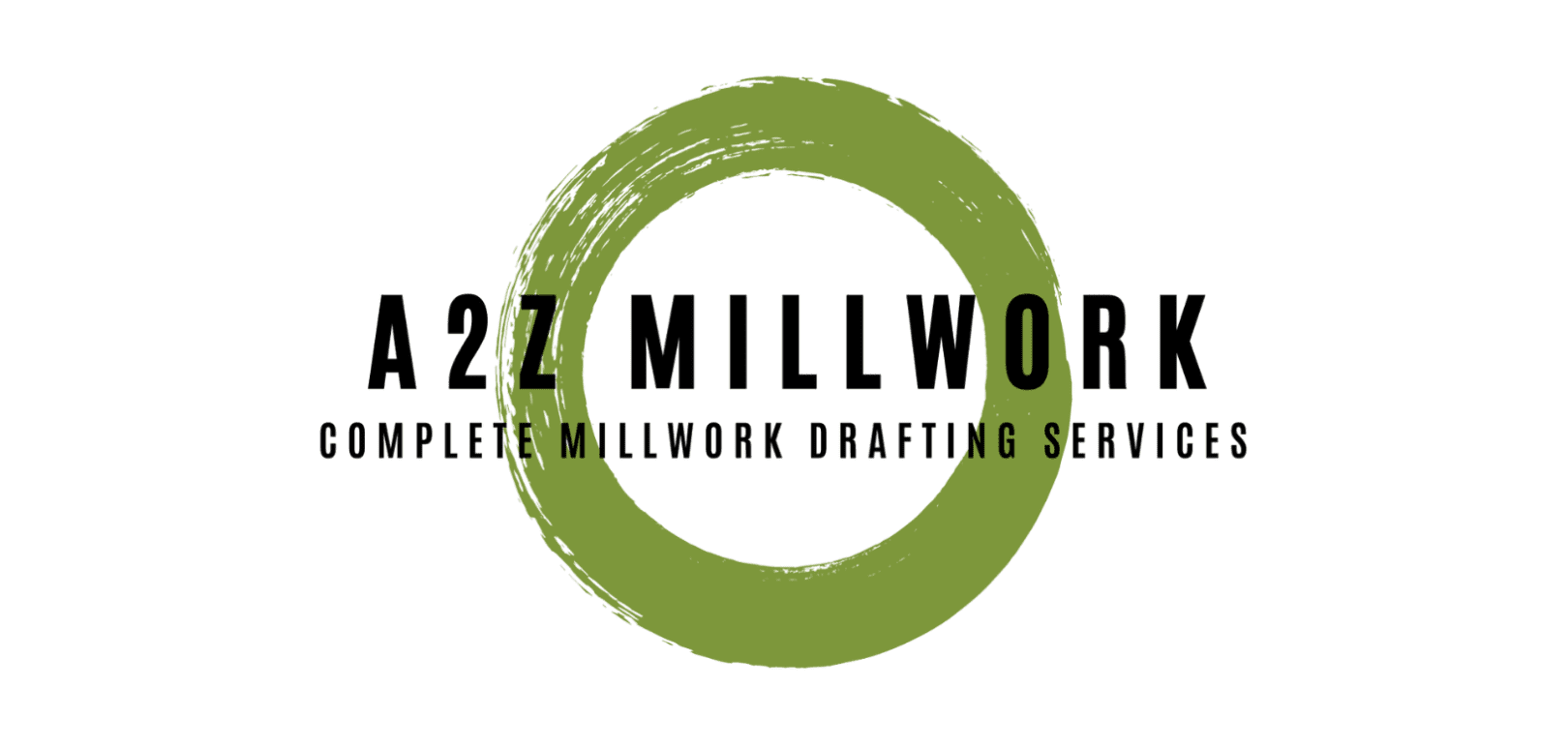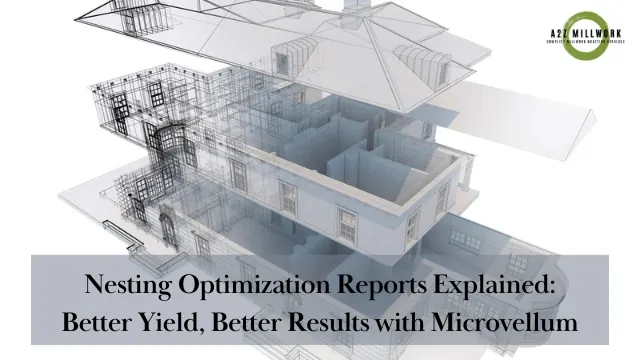Introduction: Why Nesting Optimization Matters in Modern Millwork
In the competitive U.S. millwork and custom cabinetry industry, profit margins are tight, material costs continue to rise, and clients expect flawless results with quick turnarounds. According to IBISWorld, the U.S. millwork industry generates over $31 billion annually (2024), with rising demand in both residential and commercial construction. However, the industry struggles with waste management and inefficient production workflows, which directly impact profitability.
This is where nesting optimization reports—especially when powered by advanced platforms like Microvellum—become indispensable. These reports aren’t just about cutting wood; they’re about reducing waste, saving time, improving yields, and ensuring CNC machines execute flawlessly.
In this article, we’ll break down what nesting optimization reports are, why they matter, how they improve yield and bottom-line performance, and why U.S. manufacturers are increasingly adopting Microvellum-based drafting and optimization services.
What is a Nesting Optimization Report?
A nesting optimization report is a detailed output generated by CAD/CAM software such as Microvellum that analyzes material layouts for CNC cutting. Instead of manually figuring out how to cut multiple cabinet parts from a sheet of plywood, MDF, or laminate, the report provides:
- Optimal sheet layouts to maximize material yield.
- Part labeling and identification for shop floor workers.
- Cut sequencing to minimize machine downtime.
- Waste percentage calculation for cost tracking.
- Production-ready CNC instructions for accurate machining.
Think of it as a blueprint for material efficiency—where every inch of the sheet is planned for.
Why Nesting Optimization is a Game-Changer in the U.S. Market
1. Rising Material Costs
- U.S. hardwood lumber prices increased by 12% in 2023, and engineered wood products rose by nearly 8% year-over-year (U.S. Bureau of Labor Statistics).
- Every inch of material wasted is directly tied to lost revenue.
2. Labor Shortages in the Woodworking Industry
- According to the Woodworking Network 2024 survey, nearly 73% of millwork shops struggle to find skilled labor.
- Nesting optimization reduces reliance on manual layout decisions, allowing shops to train new workers faster.
3. Faster Turnarounds = Competitive Edge
- U.S. builders and contractors are pushing for shorter lead times.
- Shops that use Microvellum nesting optimization reports can cut lead times by up to 20-30% by reducing setup errors.
The Direct Link Between Nesting Optimization and Reducing Rework
Rework is one of the biggest hidden costs in the millwork industry. According to Construction Industry Institute (CII) studies, rework can account for 4-6% of total project costs in construction projects, with cabinetry and millwork contributing significantly.
How Nesting Optimization Reduces Rework:
- Accurate CNC Data: With proper nesting reports, CNC routers cut exactly to specifications, reducing miscuts.
- Clear Shop Floor Instructions: Part labels ensure workers know where each piece belongs, minimizing assembly mistakes.
- Waste Reporting: Shops can proactively identify problem areas in material usage and fix inefficiencies.
- Consistency Across Batches: Whether it’s a single kitchen cabinet set or 500 casework units for a hospital project, nesting ensures repeatability.
📊 Stat to Note: Shops using nesting optimization report a 15–25% drop in rework incidents, according to Microvellum implementation case studies in U.S. cabinet shops.
Benefits of Microvellum Nesting Optimization Reports
1. Better Material Yield
- Average yield improvement: 8–15% compared to manual nesting.
- Example: For a shop consuming 2,000 plywood sheets annually at $75/sheet, even a 10% yield increase saves $15,000 annually.
2. Lower CNC Machine Downtime
- Reports optimize tool paths, reducing unnecessary router travel.
- Time savings: 10–20 minutes per sheet on large runs.
3. Error-Free Production
- Direct link from CAD drawings → CNC instructions, reducing translation errors between design and production.
4. Sustainability & Green Building Compliance
- With LEED projects becoming common in the U.S., waste reduction isn’t just cost savings—it’s also about meeting environmental requirements.
Case Example – U.S. Cabinet Shop Success with Nesting Optimization
A mid-sized cabinet manufacturer in Texas implemented Microvellum nesting optimization:
- Before: ~18% material waste and frequent rework.
- After: Reduced waste to 7%, saving $42,000 annually in plywood costs.
- Rework incidents dropped by 22%, leading to faster project delivery.
This case reflects a larger trend across U.S. shops: those that adopt CAD-based nesting optimization achieve better margins and higher client satisfaction.
Why A2Z Millwork Design LLC is Your Partner in Nesting Optimization
At A2Z Millwork Design LLC, we specialize in delivering CNC-ready shop drawings, Microvellum drafting, and nesting optimization reports for U.S. manufacturers.
Here’s what sets us apart:
- Fast Turnaround: We understand that speed is critical in today’s competitive market.
- Error-Free Drafting: Every report is reviewed by experienced drafters familiar with U.S. standards.
- Cost Efficiency: By integrating BOM (Bill of Materials) + Nesting Optimization, we help shops reduce both material costs and labor waste.
- National Reach: Serving millwork manufacturers, cabinet makers, and casework shops across the United States.
When you partner with A2Z Millwork Design LLC, you’re not just outsourcing drafting—you’re investing in efficiency, reduced rework, and profitability.
Conclusion: From Sheets to Savings – The Future is in Nesting Optimization
As the U.S. millwork industry faces rising material costs, labor shortages, and tighter deadlines, nesting optimization reports powered by Microvellum are no longer optional—they are essential.
By improving yield, reducing rework, cutting machine downtime, and boosting sustainability, these reports directly impact a shop’s profitability and competitive edge.
And with the support of A2Z Millwork Design LLC, manufacturers can embrace this technology without the steep learning curve, ensuring they remain at the forefront of the industry.
Ready to transform your CNC workflow with optimized nesting reports? Contact A2Z Millwork Design LLC today to see how our drafting expertise can save you time and money.






